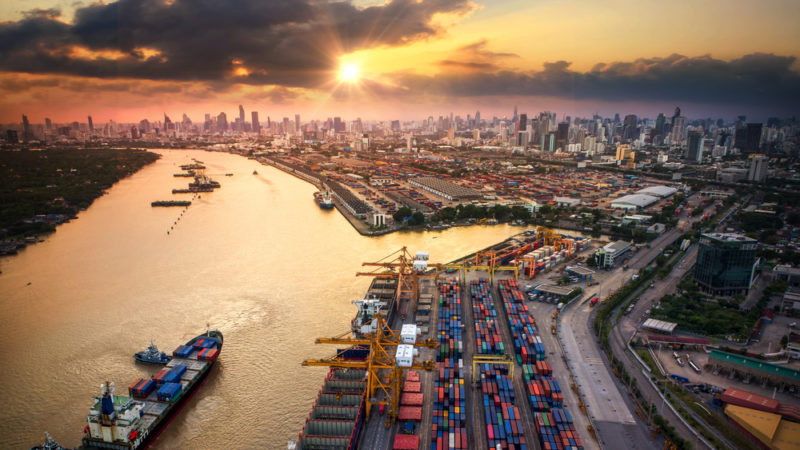Trade Liberalization
Trade liberalization is eliminating or reducing trade obstacles between nations, such as tariffs and quotas. When there are fewer obstacles to commerce, the price of items sold in nations that import goods is lower.
Susan Kelly
Aug 16, 2022
Trade liberalization refers to removing, lessening, or doing away with constraints or obstacles that prevent the free trade of products between states. Tariffs, such as levies and surcharges, and nontariff barriers, such as licencing restrictions and quotas, are included in this category of obstacles. Economists often regard the relaxation or elimination of these constraints as efforts that should be taken to promote free trade.
A contentious debate surrounds the issue of trade liberalization. Those opposed to trade liberalization argue that the policy may be detrimental to employment opportunities since it will lead to an influx of low-priced items into the local market. Some people think the items may not be as safe or as high of quality as comparable domestic alternatives, which could have been subjected to more stringent quality and safety inspections.
However, proponents of trade liberalization argue that it would eventually result in cheaper prices for consumers, more efficiency, and the stimulation of economic development. On the other hand, protectionism is the antithesis of trade liberalization and may be identified by its hallmarks of stringent market control and restrictions. Globalization is a term that refers to the process through which nations become more integrated economically as a consequence of trade liberalization.
Free trade is encouraged by trade liberalization, which enables nations to engage in international commerce of commodities without being hindered by regulatory obstacles or the costs connected with such restrictions. This relaxation of regulations lowers costs for countries that engage in international commerce with other nations and may, in the end, lead to cheaper prices for consumers since imports will be subject to lower levies, and competition will likely grow.
Because of the liberalization of trade, there is more competition from other countries, which motivates local companies to improve their manufacturing methods and lower costs. This rivalry may also encourage a nation to reallocate its resources into sectors in which it has the potential to hold a competitive edge. For instance, as a result of trade liberalization, the United Kingdom has been urged to emphasise its service industry more than its manufacturing sector.
However, trade liberalization may negatively impact specific enterprises inside a country due to increased competition from manufacturers in other countries. This increased competitiveness might result in reduced local support for the industry. If goods or raw materials are sourced from nations with laxer environmental regulations, there is also the potential for a monetary and societal risk.

Trade liberalization may be dangerous for developing countries and economies since it forces them to compete in the same market as more developed countries and economies. This difficulty can inhibit current local firms and lead to the failure of newly formed enterprises in that area. Countries with education systems that are further developed have a better chance of adjusting quickly to a free-trade economy. This is because their labour markets are better able to adapt to shifting demands, and their production facilities are more able to shift their focus to goods that are in higher demand. Countries with lower educational levels may have more difficulty adapting to the changing economic climate.
The United States of America, Canada, and Mexico all signed the North American Free Trade Agreement (NAFTA) on the same day, December 17, 1992. On the first of the year 1994, it became official policy. The deal got rid of the tariffs that had been placed on items that were exchanged between the three nations. One of the primary objectives of NAFTA was to integrate Mexico into the highly developed economies of the United States and Canada. This was done partly because Mexico was seen as a potentially profitable new market for both countries. The three administrations all shared the optimism that the trade pact would boost the economy of Mexico.

Over time, regional commerce was boosted by a factor of three, and nations increasingly invested across borders. On the other hand, former President Donald J. Trump saw the pact as harmful to manufacturing and employment in the United States. Most economic analysts believe that the North American Free Trade Agreement (NAFTA) was good for the economies of Canada and the United States. However, other economists believe that other factors, such as technological advances and increased commerce with China, may also have had a role in causing these results. NAFTA's detractors contend that the deal is to blame for the stagnation of wages and the loss of jobs in the United States due to businesses moving manufacturing to Mexico to take advantage of cheaper wages there.
Trade Liberalization
Trade liberalization is eliminating or reducing trade obstacles between nations, such as tariffs and quotas. When there are fewer obstacles to commerce, the price of items sold in nations that import goods is lower.
What does Financial Advisor do?
Financial advisor can give professional and expert advice for managing your money. The most complex task is to know about detailed market research. At this point, a financial advisor can help you to know about the most suitable products and services. He ensures the products and clients’ awareness to help you meet your sales needs.
What is a Deposit?
A deposit is a word that refers to money that is retained or held in a bank account to earn interest on the money.
How getting a store card will affect your credit
Can you tell me how a retail credit card application will affect my credit rating? Provides the most thorough information available on the subject of applying for a store card. This course will educate anyone interested in applying for a shop credit card on the process and the potential effects on their credit rating.



